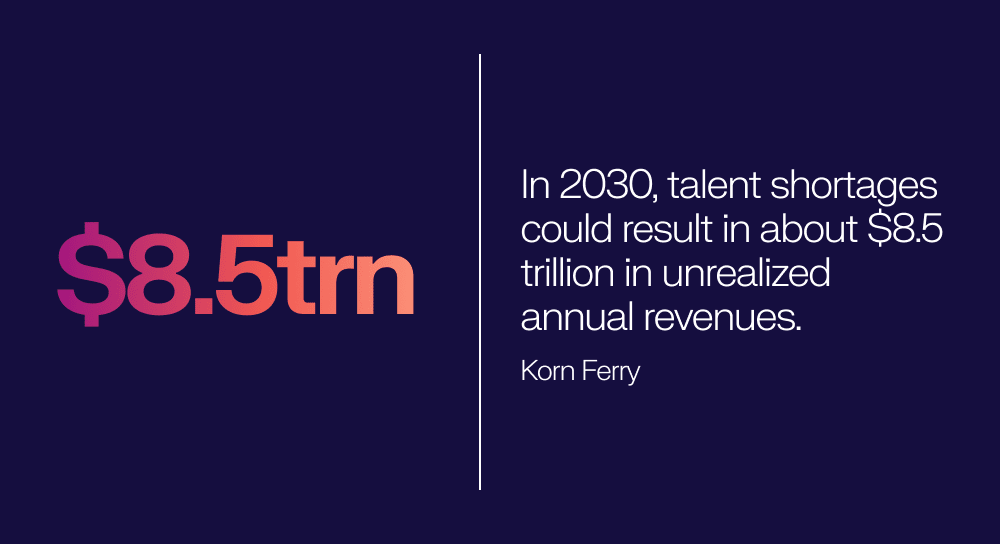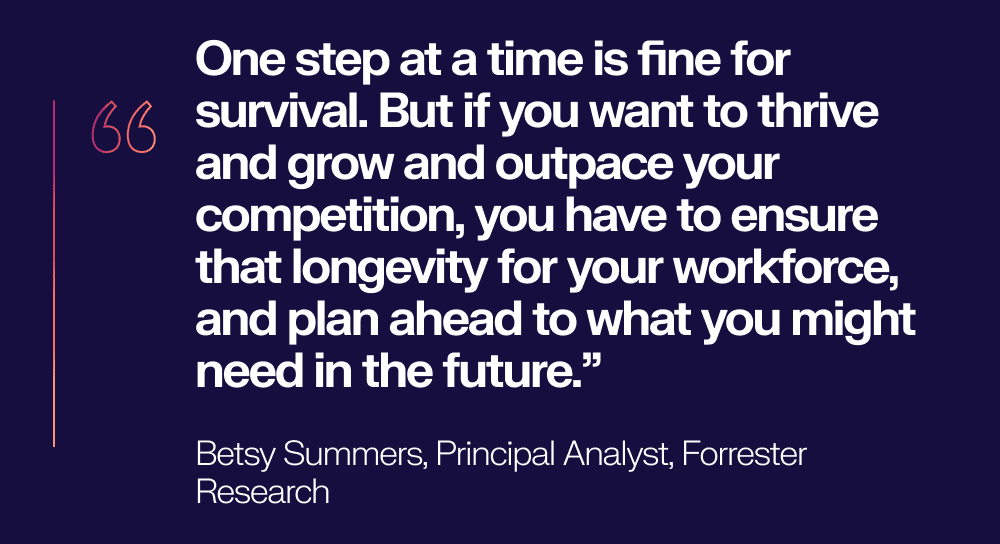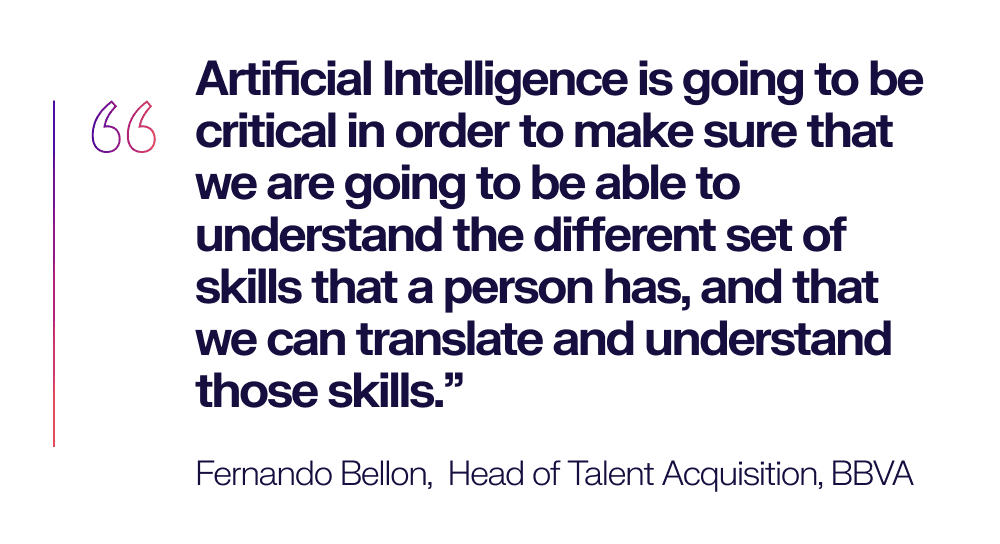The Secrets To Better Succession Planning
Succession planning is more than just a buzzword: it’s a strategic process that ensures organizations have the right people in place to take on critical roles, both now and in the future.
But what does succession planning look like in 2024, and how can companies improve this essential HR function to stay competitive?
What is Succession Planning? 🔮
Succession planning is a proactive approach to identifying and developing employees to fill key positions within an organization. It’s about ensuring that your business can continue to operate smoothly, even when people – particularly key leaders or specialists – leave. Talent shortages are costly (and 52% of people globally are watching for or actively seeking a new job, according to Gallup.)

This planning process involves evaluating your current workforce, recognizing high-potential employees, and preparing them for future leadership roles.
Why is Succession Planning Important? ⚠️
Succession planning is crucial for business continuity. Without a solid plan, your company risks losing valuable knowledge and experience when key personnel leave, which can lead to disruptions in operations – and a potential loss in competitive edge.
Moreover, a strong succession plan helps to maintain employee morale. Offering clear career development paths is a great way to boost engagement and reduce churn, which can be very costly.

However, the traditional methods of succession planning, which often rely on manual assessments and limited data, are no longer sufficient. Today’s dynamic business environment requires a more sophisticated approach, where data around skills can power decision making – and AI can be applied to provide quick, quality recommendations.

The Role of Skills Intelligence in Succession Planning 💡
Skills intelligence refers to the systematic collection, normalization, analysis, and application of data on employees’ skills and competencies, along with the skills demands of the business.
It provides a comprehensive view of the talent landscape within your organization, helping HR teams identify skill gaps, track development progress, and make informed decisions about talent management.
By integrating skills intelligence into succession planning, companies can:
- Identify Future Leaders with Precision: Instead of relying on subjective assessments or limited performance reviews, skills intelligence allows organizations to objectively evaluate the capabilities of employees. This ensures that the most qualified individuals are identified for future leadership roles.
- Address Skills Gaps Proactively: Skills intelligence helps organizations spot potential skills shortages before they become a huge emergency. By understanding which skills are essential for future success, companies can tailor development programs to prepare employees for key roles.
- Enhance Employee Development: With detailed insights into employees’ strengths and weaknesses, HR teams can create personalized development plans. This not only prepares employees for future roles but also increases engagement – by aligning development opportunities with people’s career aspirations.
“We talk about skills, but you tend to talk a lot about skills at the hiring stage… what are the critical skills within your entire organization? Because if you then start to think about critical skills, you start to talk about critical roles. And I think that just starts to help you be much more planful and prepared for the direction of travel that your business is going through.”
– Katharine Rooney, VP Talent Attraction & Acquisition, Mimecast
How AI is Transforming Succession Planning 🚀
Artificial intelligence (AI) is revolutionizing many aspects of HR, and succession planning is no exception. AI can analyze vast amounts of data quickly and accurately, providing insights that were previously unattainable – such as the skills data you need for your workforce.
AI can ensure these insights are rich, up-to-date and consistent, so you can apply them from whatever HR tool you happen to be in.
With predictive analytics, AI can forecast which employees are most likely to succeed in future roles. By analyzing patterns in performance data, career progression, and even external factors, AI can predict potential leaders with a high degree of accuracy. Beamery’s explainable AI can infer the skills someone might have (but hasn’t listed), or the skills they are likely to be able to pick up easily.
Basically, it can identify “hidden” skills amongst employees, which might otherwise go unnoticed – unlocking new opportunities for that talent.

AI like Beamery’s can then automatically “match” employees’ skills and competencies with the requirements of future roles. This reduces the time and effort needed to identify suitable candidates for succession, allowing HR teams to focus on areas where more of the human touch is required – perhaps developing appropriate training courses, or setting up mentor programs.
One of the significant advantages of AI in succession planning is its ability to reduce bias. Traditional succession planning can be influenced by unconscious biases, leading to less diverse leadership pipelines. AI, when properly designed and applied to objective criteria, can help mitigate this risk by ensuring only relevant factors are brought into the mix.
Finally, AI-driven systems can continuously learn from new data, adapting succession plans in real time. This ensures that organizations remain agile and responsive to changes in the business environment, such as emerging skill requirements or shifts in market conditions.
Best Practices: AI-powered, Skills-based Succession Planning 💖
To fully realize the benefits of AI and skills intelligence in succession planning, organizations should consider the following best practices:
Bring data (and people) together
For AI and skills intelligence to be effective, organizations must integrate data from various sources, including performance reviews, training records, and employee feedback. A centralized data repository, bringing data in from learning platforms, ATS and CRM tools, and even externally, ensures that AI algorithms have access to the most comprehensive information.
“Something that I think is starting to really make a difference for us is breaking down the silos with other parts of the business, to be very intentional about workforce planning and understanding what is coming for us in the future. … to work with our counterparts in finance, in wider HR, in L&D and talent management to understand, not just what do we need to hire and what are our retention rates, but how many people are we developing through the business, and what do we need to replace those people with, and what are the skills going to be that we need in five years time, and where can I start looking for those now? So that we can be quite intentional about what we need and when, so we can really start building up those pipelines that will add value.” – Lara Farrell,
Focus on transparency & fairness
It’s essential to maintain transparency in how AI-driven decisions are made, and succession planning is no exception. Employees should understand how their skills are assessed and how AI contributes to the decisions made about their development and careers.
Explainable AI means users of the system can understand and trust how recommendations are being made, the rationale behind them, and that good decisions will result. (Plus, if we can see what has been done and why, we can join the dots between inputs and outputs, and make the model better.)
Beamery AI has been audited for bias by a third party, keeps humans “in the loop”, and gives users clear explanations of why a certain recommendation has been made.
Invest in training and development
AI is changing the nature of work, but nothing will replace the need for continuous employee development. Organizations should invest in training programs that align with the skills identified as critical for future success.
Many of these skills will be related to AI, although progress on this is slow: Only 38 percent of companies are offering training in AI literacy, despite 82 percent of leaders saying their employees will need to develop new skills to work with AI, according to LinkedIn.

With rich skills intelligence, especially in addition to insights from the wider labor market, your organization should be able to see what themes are going to be important in your L&D programs – and make succession planning, as well as reskilling, retention and redeployment, a whole lot easier.
Prioritize soft skills
While technical skills are essential, soft skills such as communication, adaptability, emotional intelligence, and problem-solving are equally important for leadership roles. Learning agility is going to be a huge one for employees at all levels: the ability to pivot and learn new things, as new technologies emerge.
Make sure that your succession planning process evaluates and develops these soft skills in potential successors, as they are often the key to effective leadership.
Encourage cross-functional experience
Help employees to gain experience across different departments and functions within the organization. Cross-functional experience broadens an individual’s understanding of the business, enhances their strategic thinking, and prepares them for higher level roles. This also helps create more versatile leaders who can adapt to various challenges.
Consider how the skills data you collect and the AI tools you use can also help power an effective Talent Mobility program, where employees are shown relevant part-time gigs or full-time roles inside your organization, based on the skills they have and need, and the skills you are lacking internally.
In an era where business agility is key to survival, succession planning is more critical than ever. By integrating skills intelligence and AI into this process, organizations can ensure the right people are in the right roles at the right time, on an ongoing basis; enhancing efficiency, reducing costs, and gaining a competitive edge.